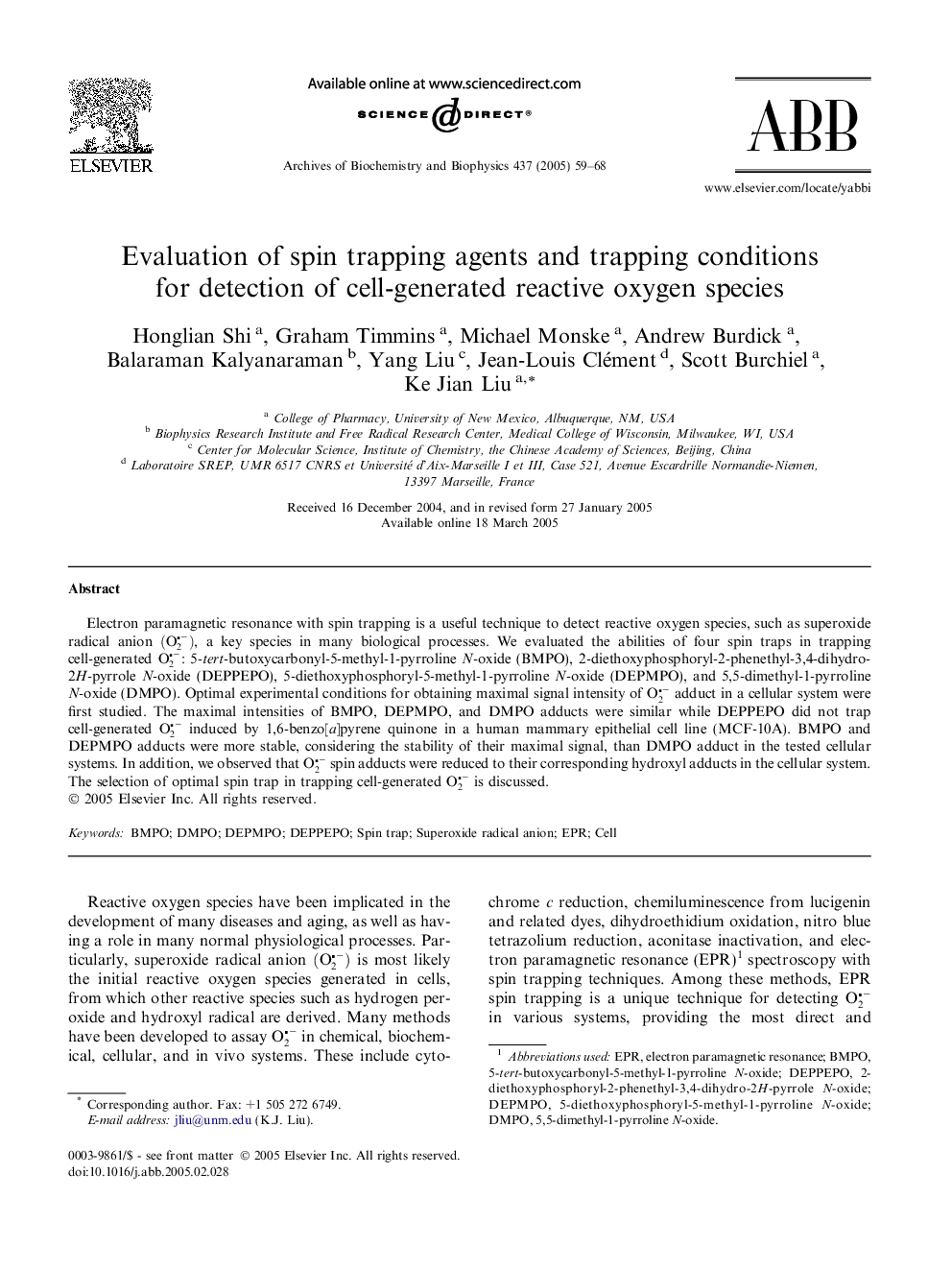| Article ID | Journal | Published Year | Pages | File Type |
|---|---|---|---|---|
| 9882232 | Archives of Biochemistry and Biophysics | 2005 | 10 Pages |
Abstract
Electron paramagnetic resonance with spin trapping is a useful technique to detect reactive oxygen species, such as superoxide radical anion (O2-), a key species in many biological processes. We evaluated the abilities of four spin traps in trapping cell-generated O2-: 5-tert-butoxycarbonyl-5-methyl-1-pyrroline N-oxide (BMPO), 2-diethoxyphosphoryl-2-phenethyl-3,4-dihydro-2H-pyrrole N-oxide (DEPPEPO), 5-diethoxyphosphoryl-5-methyl-1-pyrroline N-oxide (DEPMPO), and 5,5-dimethyl-1-pyrroline N-oxide (DMPO). Optimal experimental conditions for obtaining maximal signal intensity of O2- adduct in a cellular system were first studied. The maximal intensities of BMPO, DEPMPO, and DMPO adducts were similar while DEPPEPO did not trap cell-generated O2- induced by 1,6-benzo[a]pyrene quinone in a human mammary epithelial cell line (MCF-10A). BMPO and DEPMPO adducts were more stable, considering the stability of their maximal signal, than DMPO adduct in the tested cellular systems. In addition, we observed that O2- spin adducts were reduced to their corresponding hydroxyl adducts in the cellular system. The selection of optimal spin trap in trapping cell-generated O2- is discussed.
Related Topics
Life Sciences
Biochemistry, Genetics and Molecular Biology
Biochemistry
Authors
Honglian Shi, Graham Timmins, Michael Monske, Andrew Burdick, Balaraman Kalyanaraman, Yang Liu, Jean-Louis Clément, Scott Burchiel, Ke Jian Liu,
